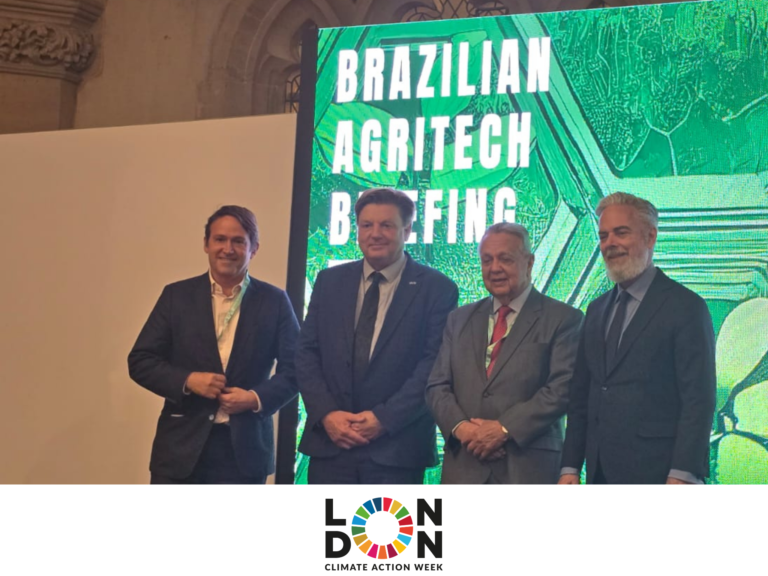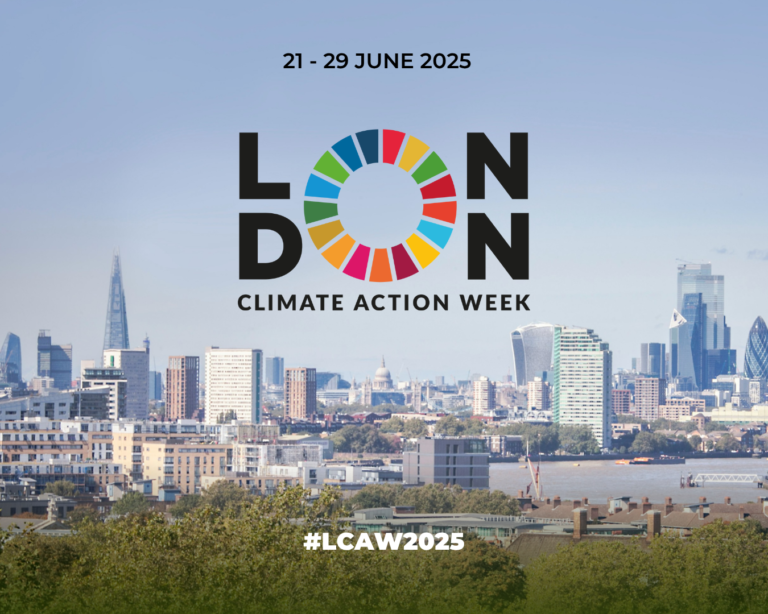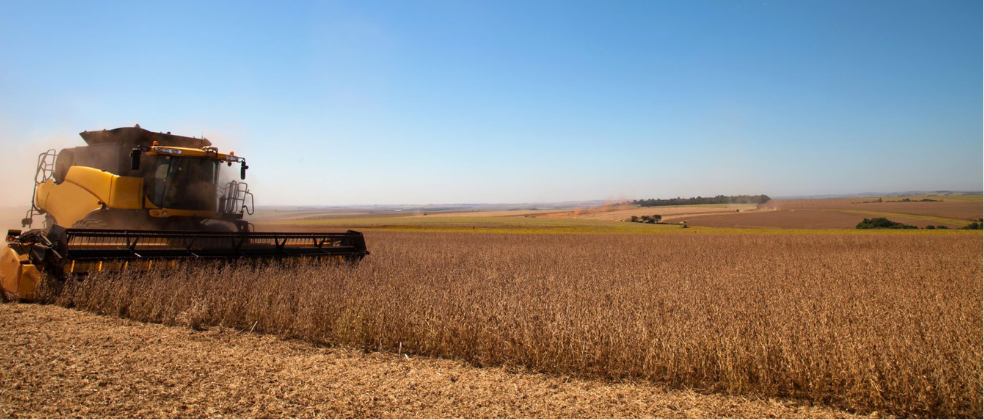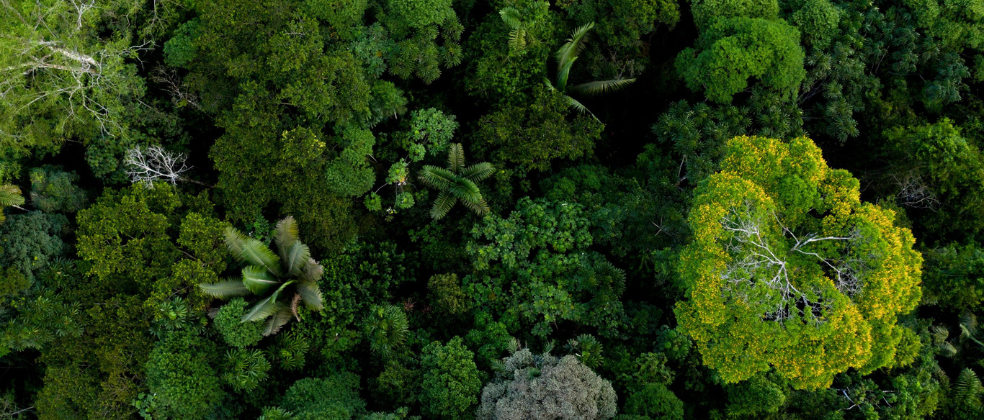The first programme of the Responsible Commodities Facility (RCF) is now underway, with an investment of US$11million by UK supermarkets Tesco, Sainsbury’s and Waitrose to fund the new system of financial incentives for farmers in Brazil who commit to deforestation- and conversion-free (DCF) soy cultivation.
The RCF will provide finance to 36 farms, located in the Cerrado region of Brazil, producing 75,000 tons of soy per year, resulting in the conservation of around 11,000 ha of native vegetation, 4,200 in excess of legal reserves. The Cerrado, which lies mostly in Brazil, is the world’s most biodiverse savanna and it is under threat from high levels of deforestation, with over 28% estimated to be linked to soy expansion (source). All farms in the trial stage will be located in the Matopiba, Goiás and Mato Grosso region, areas at risk of deforestation and biodiversity loss.
After an initial 12-month trial phase, it is expected that the Responsible Commodities Facility (RCF) will be scaled up to include hundreds of farmers across Brazil, helping to protect vast tracts of native Cerrado vegetation in Brazil, protecting biodiversity, water quality and enabling carbon sequestration.
An independent Environmental Committee composed of; UN Environment Programme (UNEP), The Nature Conservancy (TNC), BVRio, WWF, Conservation International (Brazil), Proforest and Instituto de Pesquisa Ambiental da Amazonia (IPAM) will review and provide input into the environmental management of the facility. The RCF is run by Sustainable Investment Management Ltd (SIM), a signatory of the IFACC initiative (Innovative Finance for Amazon, Cerrado and Chaco), and complies with the IFACC Environmental and Social requirements. IFACC is an initiative led by TNC, the Tropical Forest Alliance (TFA) and UNEP to accelerate the flow of finance to producers in the region and to expand production of beef and soy without further clearing of forests and native vegetation.
“We are very grateful to our Environmental Committee for the time and effort they have already put into the development of the RCF and into the first programme. Having this exceptional level of expertise and their global view has helped create what we hope will be a game-changer in the fight to balance food production with conservation.” Pedro Moura Costa, SIM’s CEO
Along with those contributing financially to the first programme, which also includes sponsorship from US cocoa and chocolate product manufacturer Barry Callebaut, many more major international soy buyers participated in the design of the RCF. It is hoped the trial stage will provide valuable insight into how the mechanism works in practice on farms, and will inspire other organisations and businesses to lend their support.
“Over the last two years of development, we have seen stakeholders with many differing opinions and priorities come together and unite behind a single vision.” Pedro Moura Costa, SIM’s CEO
The initiative is financed through a first of its kind approach: dollar-denominated green bonds (CRAs – Certificates of Receivables from the Agribusiness) registered in the Vienna Bourse. The capital raised will be used to offer low interest loans to farmers who comply with its eligibility criteria, and commit to zero deforestation of native vegetation, over and above their legal reserves, preventing negative climate impacts and loss of habitat.
Pedro Moura Costa, SIM’s CEO, explains why the programme is needed and its intended impact, “Crop finance is a key part of soy farmers business models and there is a huge appetite and market for green finance. By directing this flow of green finance we can support the production of soy while rewarding the voluntary conservation of native vegetation.
“The urgent need to reduce GHG emissions from deforestation requires a new flow of financial resources to those at the frontline of agricultural production. At the same time, it is important to reconcile the objective of conservation with that of economic production, so that one complements the other. The RCF intends to solve these problems through its innovative new financial model and to unlock these large flows of green investment to do good, by supporting sustainable agriculture and protecting forests in a financially sustainable way that, importantly, rewards farmers.”
The financiers of the RCF Cerrado Programme 1 commented;
Ken Murphy, Tesco Group CEO said: “Soy is the single most impactful forest-risk commodity in Tesco’s supply chain. Which is why we’ve already made a commitment that by 2025 we will only source soy from whole areas verified as deforestation-free. To help us meet this goal it’s vital we provide practical, financial support to farmers in Brazil committed to the sustainable production of soy and the conservation of native vegetation. Together with the formation of the UK Soy Manifesto, this initiative highlights the need for the whole food industry to come together and support the protection of critical ecosystems like the Cerrado. We urge more businesses and organisations to join us in providing funding for the RCF, to aid its roll-out in future years.”
Simon Roberts, CEO at Sainsburys, said: “During COP26, where Sainsbury’s was a principal supermarket partner, we signed the WWF Retailers’ Commitment for Nature, with a collective aim to halve the environmental impact of UK shopping baskets by 2030 and tackle deforestation, supporting our commitment to achieve 100% deforestation and conversion free supply chains by 2025. To limit global warming to 1.5 degrees and achieve the goals set out in the Paris Climate Change Agreement, it is vital that we protect and restore forests and ecosystems such as the Cerrado in Brazil. It’s why we are proud to join forces with others to help fund the Responsible Commodities Facility, investing in the sustainable production of soy, using green finance to reward farmers for protecting wildlife and biodiversity in the Cerrado.”
James Bailey, Executive Director, Waitrose, said: “We’re delighted to be one of the leading investors in this inaugural fund and applaud Tesco and Sainsbury’s for their leadership on this also. We are committed to doing our part to protect and restore nature, and we have set a bold commitment to sourcing all our key raw materials responsibly by 2025, including soy. Tackling deforestation is fundamental to this and the scale of the challenge requires innovative new approaches. We hope this pilot fund will demonstrate the huge opportunity for green finance to incentivise responsible practices to ensure we protect our global forests. Achieving this potential, however, will require broader uptake, and I’d therefore appeal to fellow food sector businesses to join us in supporting and investing in this extremely important initiative to help protect the Cerrado, before it’s too late.”
Commenting on the wider environmental implications of the initiative, RCF Environmental Committee members and initiative development partners, added;
“Global demand for soy production is driving significant deforestation,” said Susan Gardner, Director, Ecosystems Division at UNEP. “Practical financial solutions like the Responsible Commodities Facility incentivise farmers to decouple commodity production from deforestation and land conversion practices, leading to enhanced landscape restoration, climate mitigation, adaptation and biodiversity protection in line with the United Nations Sustainable Development Goals and the UN Decade on Ecosystem Restoration. A great example of how farmers can be effectively incentivized would be for all the companies that have signed up to the Cerrado Manifesto Statement of Support to materialise this commitment through funding this facility.”
The Nature Conservancy, Director of Agriculture Finance, Greg Fishbein, “RCF will create tangible climate and biodiversity impacts by offering farmers who can legally clear their forests a clear financial incentive not to do so. This is exactly the type of mechanism we envisioned when we created IFACC – one that can leverage commercial finance to support farmers in their transition to climate-friendly production models.”
Operational partners added their support for the initiative:
Renato Barros Frascino, Partner and Head of Agribusiness at Opea commented: “We are honoured to be part of the development of this new market. This is one of the first dollar-denominated CRA operations, and will allocate funds from international investors to Brazilian agribusiness, aiming to finance producers that are committed to non-deforestation. This CRA program is an alternative for the various Brazilian rural producers, who are concerned with sustainable production, to be able to access capital market resources, including those from international investors, under more competitive conditions.”
Fabricio Pezente, CEO, Traive, commented: “The issuance of the first green credit facility denominated in US dollars is a huge milestone for Brazilian agriculture and the world. It finally attracts the foreign capital to safely and responsibly invest in a key player for food security. Add to this a digitized process, ready to scale, and we have a very promising scenario for the industry. With this project, we reaffirm our commitment to connect the entire financing ag-chain.”
The RCF complements other responsible soy production initiatives such as the Cerrado Manifesto – a commitment to reduce deforestation from soy production signed by major consumer retailers and primary production groups, the UK Soy Manifesto and the Consumer Goods Forum’s Forest Positive Coalition. SIM is a member of the Innovative Finance for the Amazon, Cerrado and Chaco (IFACC), managed by UNEP Climate Finance Unit, TNC and the Tropical Forest Alliance.





